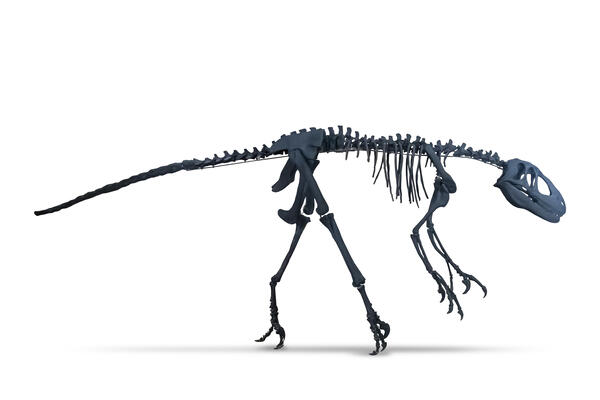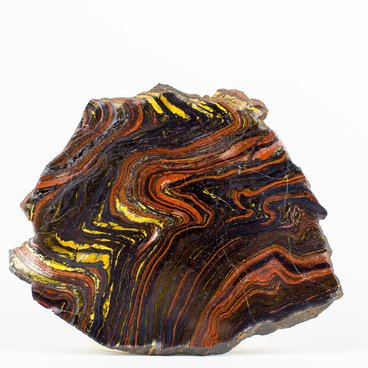The collection of the Natural History Museum of Tatarstan contains a skeleton model of Deinonychus — a small predatory dinosaur of the Cretaceous Period. The cast was made from the remains discovered by archaeologists in the USA, Montana.
Deinonychus lived on the territory of modern North America 100–120 million years ago. They were about human size and reached 3.3 meters in length. The length of the tail was almost half of the Deinonychus body. It used the tail to maintain balance when running. Adult Deinonychus weighed about 80 kilograms, but sometimes there were also larger individuals up to 100 kilograms.
Deinonychus means a ‘terrible claw’ in Greek. American paleontologist John Ostrom named it in 1969. The reason for this was the anatomical feature of the hind feet of the Deinonychus: one of three toes was turned back and had a curving sickle-like claw up to 12 centimeters long. While walking or running, this claw retracted and the toe was raised.
Deinonychus had a large skull with holes that reduced the weight of the bones. Their muzzle was elongated, with wide cheekbones and large eye sockets. The powerful jaws consisted of 60-70 curved teeth, which resembled the shape of dagger blades. These dinosaurs walked on two legs and had ankles withstanding heavy loads during fast running. The front legs of Deinonychus were short and did not reach the ground. However, they could grab and hold various objects.
Paleontologists suggest that Deinonychus hunted in packs. Thanks to the light body and long tail, which was like a steering wheel, they could easily change direction and block the prey. More often, they attacked herbivorous dinosaurs — tenontosaurs, especially the ones that were young or sick. Packs of predators separated the prey from the herd and then inflicted fatal wounds with claws and teeth.
American science fiction writer Michael Crichton described the appearance and habits of Deinonychus in the novels ‘Jurassic Park’ and ‘The Lost World’. However, he chose another name for them — Velociraptors.
Deinonychus lived on the territory of modern North America 100–120 million years ago. They were about human size and reached 3.3 meters in length. The length of the tail was almost half of the Deinonychus body. It used the tail to maintain balance when running. Adult Deinonychus weighed about 80 kilograms, but sometimes there were also larger individuals up to 100 kilograms.
Deinonychus means a ‘terrible claw’ in Greek. American paleontologist John Ostrom named it in 1969. The reason for this was the anatomical feature of the hind feet of the Deinonychus: one of three toes was turned back and had a curving sickle-like claw up to 12 centimeters long. While walking or running, this claw retracted and the toe was raised.
Deinonychus had a large skull with holes that reduced the weight of the bones. Their muzzle was elongated, with wide cheekbones and large eye sockets. The powerful jaws consisted of 60-70 curved teeth, which resembled the shape of dagger blades. These dinosaurs walked on two legs and had ankles withstanding heavy loads during fast running. The front legs of Deinonychus were short and did not reach the ground. However, they could grab and hold various objects.
Paleontologists suggest that Deinonychus hunted in packs. Thanks to the light body and long tail, which was like a steering wheel, they could easily change direction and block the prey. More often, they attacked herbivorous dinosaurs — tenontosaurs, especially the ones that were young or sick. Packs of predators separated the prey from the herd and then inflicted fatal wounds with claws and teeth.
American science fiction writer Michael Crichton described the appearance and habits of Deinonychus in the novels ‘Jurassic Park’ and ‘The Lost World’. However, he chose another name for them — Velociraptors.



